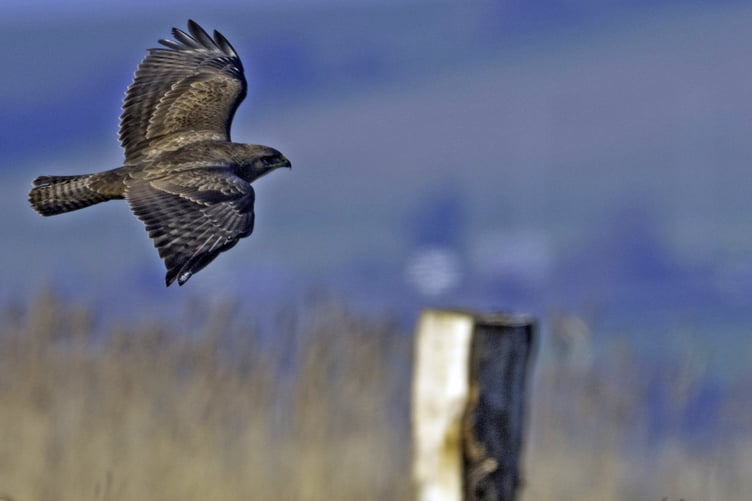TWICE last week as I was driving along the same lane in Chobham, a buzzard took off from the roadside and flew alongside my car
I wasn’t in a position to be able to stop to try to photograph it, but I did experience a wonderful close-up of this striking-looking bird.
The buzzard has overtaken the kestrel to become the UK’s most common bird of prey. There are 75,000 breeding pairs of buzzards found widespread throughout Britain, increasing the chances of seeing them locally.
I often see a buzzard wheeling in the sky above my house, along with seeing the red kite this has now become a regular feature. The buzzard’s recent success is due to the control of pesticides and the recovery of the rabbit population from myxomatosis. Apart from hunting mammals and birds, buzzards are adept scavengers and eat large quantities of earthworms.
Its size and shape make it quite easy to recognise in flight, even though it is sometimes mistaken by sightseers in Scotland, giving it the moniker Tourist Eagle.
Its distinctive mewing call is also quite easy to recognise, but I have noticed a variation in colouration from very dark colouring to patchy white markings to very pale markings.
The spring is a great time for bird watching as many become more vocal and flying displays take off. I have witnessed buzzard courtship whilst walking over Pirbright Common. The display is known as the ‘rollercoaster’, which involves the buzzards soaring up on the thermals and then tumbling and diving, pulling out of the stoop to repeat the process.
It’s quite amazing what wildlife can be seen on your doorstep these days! When I moved to Knaphill in the early 80s there were no peregrines in Woking, no buzzards, nor red kites in the area.





Comments
This article has no comments yet. Be the first to leave a comment.